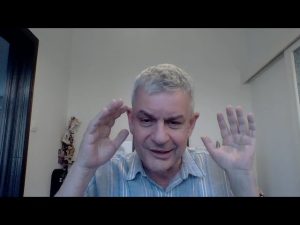Don’t Use Drama to Offset Depression (Dysphoria, Dysthymia)
1. Introduction to “Dwords” and Definitions
- The speaker introduces the concept of “dwords” in psychology—depression, dysphoria, dysmeia, and drama—highlighting drama as a coping mechanism against these mental states. [00:00]
- Dysmeic disorder is defined as a chronic, less intense but enduring depressive condition, now called persistent depressive disorder in DSM-5. Dysphoria is described as generalized discontent and agitation affecting a significant portion of the population. [01:00]
2. Prevalence of Depressive Disorders
- The incidence of depressive disorders among young people has increased significantly, having quadrupled, and in adults, about a third to 40% suffer from depressive and anxiety disorders, especially post-pandemic. [02:20]
3. Dramatization as Dysfunctional Coping
- Dramatization is explained as a dysfunctional, sometimes pathological, coping strategy used to manage internal depressive symptoms by creating external drama. This behavior includes exaggeration to attract attention and manage relationships. [03:20]
- It is a form of displacement, projecting internal conflicts outward into external crises, which drown out inner turmoil by replacing internal noise with external drama-generated noise. [04:50]
4. Functions of Drama
- Drama is closely tied to attention-seeking, providing self-soothing through victim status, eliciting rights and obligations from others, and serving as a way to organize and interpret reality. [06:30]
- Drama often involves enacting forbidden, dangerous, or threatening impulses or fears externally, allowing a cathartic release and empowerment through symbolic enactment, similar in function to religious rituals or psychodrama therapy. [08:40]
5. Psychological Elements of Drama
- Drama inherently contains a mildly sinister, ominous atmospheric quality, creating a suspended, precarious emotional space similar to walking on eggshells or nightmares. This space enables the safe release of negative emotions like anger, fear, and rage. [10:30]
6. The Drama Bond Concept
- A new concept called “drama bond” is introduced, describing a destructive, insecure attachment style fueled by trauma, intermittent reinforcement, and structural insecurity, leading to anxiety, desperation, and acting out behaviors. [12:20]
7. Drama and Self-Love Deficit
- Drama is linked to a deficit in self-love. Individuals unable to love themselves unconditionally often seek conditional and dysfunctional relationships that mimic unconditional love, often with equally broken or codependent partners. [13:40]
- Drama is falsely equated with emotional intensity and meaningful accomplishments, but it is, in reality, a simulation divorced from actual reality that fosters frustration and grief. [15:30]
8. Emotional Effects of Drama on Participants
- People involved in drama often experience fear, emotional detachment, or desensitization due to repetitive intensity, which leads to observer-like positions and indifference—described metaphorically as “late stage cancer” of emotional engagement. [17:30]
9. Positive Aspect of Drama Bonding
- Despite its dysfunction, drama bonding may provide a sense of safety and security for participants, highlighting the nuanced role drama can play in personal relationships. This topic is set for further discussion as the video progresses. [18:50]
All timestamps [mm:ss] refer to corresponding points within the meeting transcript.






